This series WAS intended to be worked into a book when I first started it. As things went on, and I realized I was turning to more and more books about the subject of ghosts and ghost hunting, I decided that my own little ramblings weren’t really meant to be thrown into the pool with the others. What it IS is my my small attempt to finally un-bias myself as a paranormal researcher, to become the good skeptic I wanted to be, and not lean too far towards being a full-on believer or cynic.
No matter where you stand on the idea of ghosts or how you hunt them, I would love to hear your thoughts and feedback. For me, I had experienced something once, long ago, that drastically changed my view of the world around me and left me with questions. What had I seen? Was it a ghost? Was it something else? I believed I had seen a ghost…now what?
Well, a good start at figuring that out would be to take a look at an elephant.
The Blind Men and the Elephant John Godfrey Saxe (1816-1887)
It was six men of Indostan To learning much inclined, Who went to see the Elephant (Though all of them were blind), That each by observation Might satisfy his mind.
The First approached the Elephant, And happening to fall Against his broad and sturdy side, At once began to bawl: “God bless me! but the Elephant Is very like a WALL!”
The Second, feeling of the tusk, Cried, “Ho, what have we here, So very round and smooth and sharp? To me ’tis mighty clear This wonder of an Elephant Is very like a SPEAR!”
The Third approached the animal, And happening to take The squirming trunk within his hands, Thus boldly up and spake: “I see,” quoth he, “the Elephant Is very like a SNAKE!”
The Fourth reached out an eager hand, And felt about the knee “What most this wondrous beast is like Is mighty plain,” quoth he: “‘Tis clear enough the Elephant Is very like a TREE!”
The Fifth, who chanced to touch the ear, Said: “E’en the blindest man Can tell what this resembles most; Deny the fact who can, This marvel of an Elephant Is very like a FAN!”
The Sixth no sooner had begun About the beast to grope, Than seizing on the swinging tail That fell within his scope, “I see,” quoth he, “the Elephant Is very like a ROPE!”
And so these men of Indostan Disputed loud and long, Each in his own opinion Exceeding stiff and strong, Though each was partly in the right, And all were in the wrong! [1]
Ok, folks. It’s homework time. Homework, you ask? Don’t worry. I’m not going to ask you to memorize the Gettysburg Address or figure out calculus or anything like that. As a matter of fact, I don’t expect it by tomorrow morning on ruled paper, double-spaced with footnotes. You can take your time on this one, but beware. I’m pretty sure that it won’t be as easy as it sounds. Actually, I know it won’t be. It’s been something I’ve been trying to accomplish now since I was ten years old, and I’m still at it three decades later.
Your assignment, should you choose to accept it, will be to ask yourself two simple questions. The first, which may negate the second one entirely, is a simple yes or no question. The second question, however, may come really quickly to you or may take you years or even decades to answer. You may never find an answer for it, no matter how hard you try. The first question I pose to you is, “Do you believe in ghosts?”
A yes or no answer will suffice – no need to get into detail with this one. Once you have your answer, you can move on the second question, which is, “If you answered yes, what do you think they are?”
These were two very simple questions I recently asked of some friendly folks on one of the paranormal forums I attend, and also via Facebook to people who I know and don’t typically associate with in regards to exploring hauntings. To adequately try and explain the simple question What Is A Ghost? I had to take a look at the centuries of religious explanations and folklore on ghosts as well as the 21st century ideas that are usually just a mouse click or flip of the TV remote away.
Eight kind folks (the ones who didn’t look at my posts and consider me a fruitcake) responded to the questions I asked. As far as the first question went, there were six people who answered yes, that they believed in ghosts, while only two people responded with a no, but those two, however, offered some other insights that helped explain why they didn’t believe in ghosts, and their own beliefs on what may be happening in locations where ghosts seem to be reported.
When asked what they think a ghost is, however, the responses vary greatly. Of those same eight people I asked the question “what do you think they are?” there was one similar explanation mixed in with the other ideas in their answers; that there is some form of energy present that may explain what is going on. A few people believed that this energy was the residual part of a person who had died, and the spirit or soul was this energy. Another likened it to a collection of energy that builds up over time, given off by the living beings that inhabited the location, that later leads to reports of ghostly activity, and another that there is some form of residual energy that is present to account for the haunting. This answer was also supplemented with the ideas of visiting spirits sent or allowed to return, likely to convey a message or provide closure, demonic or angelic beings, inter-dimensional or alien entities, and even the idea that ghosts are nothing more than figments of the human imagination.
So is a ghost a disembodied spirit? Are they a collective of energy that has built up over time to be experienced again by others? Or are there other forces at work, such as demons or angels?
Before we can entertain these ideas, let’s take a look at a couple of the popular explanations for what a ghost is, and explore how people have been trying to figure out what they are.
According to the Merriam/Webster, a ghost can be described as the seat of life or intelligence; a disembodied soul; especially the soul of a dead person believed to be an inhabitant of the unseen world or to appear to the living in bodily likeness; a spirit or demon; a faint shadowy trace; the least bit; and, finally, a false image in a photographic negative or on a television screen caused especially by reflection.[2]
On yet another popular website I found the following description of a ghost, “In folklore, fiction, philosophy, and popular culture, a ghost is the soul or spirit of a deceased person, taken to be capable of appearing in visible form or otherwise manifesting itself to the living.” Continuing on that page, you will see a ton of information that will take you from the cradles of civilization into the modern age, blending ideas of theology and mysticism and even the arts in their collective to show how the ideas of ghosts have changed and even stayed the same over centuries.[3]
It’s easy to see how the popular ideas of what a ghost may be influence the perspectives of the individual in many instances. All around us we are inundated with images and depictions of ghosts. Classic stories, movies, and television shows all offer us the very same ideas, so when one person is asked if they believe or not, the yes or no answer will usually come pretty quickly.
Throughout history the ideas of ghosts has typically been derived from various religious belief systems, and it’s a trend that has kept up fairly well right up to the modern day. Some of the very first ideas of what a ghost are appeared in old Mesopotamian religious texts, and are some of the first to describe a ghost as being created at the time that the physical body dies and retaining the memory and personality of the deceased. Through the centuries each major society developed and altered their own views of ghosts and how or why they appeared to the living. Many also incorporated mystical beings and demonic figures to describe what they were experiencing, and many of these beliefs continue to this day.
In the 19th century there were two distinct movements that would usher in most of the modern schools of thought that have continued on into the present day. The first, the spiritualist movement, had early roots stemming from the religious movement of the Millerites and the Mormons, but it was not until a very well-known spirit made its introduction to two small girls in Hydesville, New York that the movement would gain mainstream acceptance. [4] The second, the psychical research movement, was born of the very beliefs of the spiritualist movement, but was directed at exploring it from a scientific standpoint. Let’s take a look at them both.

On March 31st, 1848, Kate and Margaret Fox claimed to have discovered a form of communication with a spirit that they had nicknamed “Mr. Splitfoot”, who later identified himself to the girls as the spirit of a peddler named Charles B. Rosma, who had been murdered five years earlier and buried in the cellar of the Fox’s Hydesville home. Word of the phenomena soon spread, eventually attracting the attention of a radical Quaker group who, after seeing the girl’s abilities first hand, promoted the entire affair, giving birth to the early spiritualist movement in the United States. At the time, the movement was a handy tool that allowed zealot religious groups to use spiritualist ideas to align against whatever political and social situations they opposed.
In time the sisters took their new found fame and mediumistic abilities on the road, giving hundreds of demonstrations of their communication skills with the dead to eager audiences. Eventually they came under skeptical scrutiny, and were charged as frauds by Dr. Charles Grafton Page. Page claimed that the girls were creating the knocking and popping noises from under the concealment of their clothes. This had little weight in the way of swaying public interest, however, and the girls continued their stage presentations.
In their adult years, however, both girls developed serious alcoholic tendencies and, under the barrage of increased skeptical attacks, came forward to expose themselves and their methods for generating the sounds that for years were accepted as spirit communication. They demonstrated that, by contracting the extremities in their arms and legs, they could produce loud popping noises from the joints of the fingers and toes. They publicly denounced their spiritualist beliefs, and Kate Fox went so far as to say, “I regard Spiritualism as one of the greatest curses that the world has ever known.” Sadly, within a year Margaret tried to recant her own admissions of fraud but was unable to undo the damage of her own admissions. Both women wound up penniless, and died a short time later.[5]
But the movement that began in their Hydesville home was thriving, and in many different directions. Among these were the séance mediums, who employed a variety of different phenomena to exact answers from the dead for those who paid to join them in their sittings. Spirit photographers claimed to be able to photograph the spirits of deceased relatives while photographing their living relatives. If the spirits wanted to communicate, somebody found a way to bridge that gap between the living and the dead and make a living at doing it.

At the same time the spiritualists were thriving, so were the skeptics of their abilities and of the existence of ghosts in general. One of these first skeptical groups, the Society for Psychical Research [6], was founded in 1882 in London, England by a group of men and women with varying backgrounds, and they set out to explore the spiritualistic claims being made by mediums, investigate haunted locations, and generally try to find evidence for or against the cases they pursued. Their original intent was to offer a scientific inquiry into all the various paranormal claims they pursued, and when one looks back at their studies it is clear that they were thorough and undaunted in their research. In the following years several society chapters sprang up around the globe, many of which are still in operation today.
Another group, perhaps the oldest and also still practicing today, is the Ghost Club [7]. This group got its start in 1855 at Trinity College in Cambridge, England. One of its most notable members, Harry Price, joined in 1927, was world renowned for his case study of the Borley Rectory haunting in Borley, Essex, England. After a brief period where interest waned, Price helped restructure the club, opening the club to offer memberships to women and to keep its focus more oriented towards skeptical research into the various claims or paranormal phenomena. Over the years they have branched out to include the study of UFOs, dowsing, and cryptozoology within their ranks. They continue to meet, holding several research trips each year.
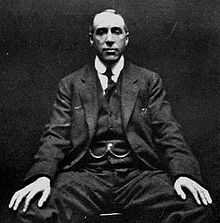
Harry Price was one of the first paranormal researchers to base his research from a skeptical viewpoint, exposing many blatant frauds at the time. He had an interest in magic, and this interest and knowledge assisted him in learning mush of the trickery used by mediums to create the illusions of spirit communication.[8]

And then there was Charles Fort [9], an American writer and researcher of paranormal claims. Fort spent countless hours in the libraries of New York and London pouring over any written media that offered a glimpse into the things that lay outside the known realms of science. He would take copious amounts of notes on whatever subject he was researching. Today many of his notes still survive, in their cryptic, shorthand presentation, at the University of Pennsylvania. He produced four books based on his paranormal studies, all of which can still be found in print today.
The main ideas that Charles Fort brought to the field of study of paranormal phenomena, however, were an understanding that there should be more emphasis on the person observing the phenomena and their perceptions of it. Here are some of Fort’s ideas:
•That the boundaries between science and pseudoscience are “fuzzy”: the boundary lines are not very well defined, and they might change over time.[9] •That whereas facts are objective, how facts are interpreted depends on who is doing the interpreting and in what context.[9] •That there is a strong sociological influence on what is considered “acceptable” or “damned”[8] •He argued that most, if not all, people (including scientists) are at least occasionally guilty of irrational and “non scientific” thinking.[9]
Mainstream science still has a hard time working off the urgings of Fort in regards to unexplained phenomena, and many still consider his points of view credulous and naïve. With a growing number of people, however, who have begun serious research of the claims of the paranormal, whether it be ghosts, or Bigfoot, or why there is Braille on drive-up ATM machines, Fort’s idea that the researcher, being an observer, is the key component in any experiment or attempt in observing and understanding any paranormal phenomena, and that even though there may appear to be a clear cut explanation given after one study, the findings may seem irrelevant if the boundary lines between empirical and pseudoscience shift. Say that ten times fast.
Under-recognized for his efforts, I recommend anybody with an interest in pursuing hauntings and ghosts read up on Charles Fort and see how his approach can help broaden their own research methods and help them understand that even the scientists who toe the tightest lines are occasionally guilty of thinking outside the box.
As the 20th century rolled on we were introduced to a new method of researching ghosts and hauntings that merged the spiritual with the scientific and offered us an all new way to look at hauntings.

Author and noted parapsychologist Dr. Hans Holzer has investigated and written more on the ideas behind ghosts and hauntings than anyone else. He single-handedly coined the term ghost hunter, the title of one of his one hundred and thirty eight books. His was one of the first descriptions of a ghost I ever came across when I read his book Ghosts – True Encounters With The World Beyond, in which he describes a ghosts as, “apparitions of ‘dead’ people or sounds associated with invisible human beings – are the surviving emotional memories of people who have not been able to make the transition from their physical state into the world of the spirit”.[10]
Dr. Holzer employed the use of psychic mediums in his research, a method which has gotten its share of criticism over the years. Many view the supposed abilities of mediums to contact and channel the spirits of deceased people to be phenomena worthy of study in and of itself. Even Holzer admitted that one had to be careful when working with a medium, as you can’t offer them questions or anything else that may lead them in any way. [11] In the end Holzer moved away from the scientific methods that were being explored decades earlier by the SPR and Ghost Club, instead building on the more spiritualistic ideas, and his exploits and casework is both intriguing and a testament to his firm belief system. His beliefs that ghosts are typically the product of a swift and unwelcomed death, and that this leads to confusion on the part of the spirit, possibly keeping it attached emotionally to a location for indeterminate periods of time, and that we are able to help them transition from this world into the next through the use of people who have an ability to communicate directly with them, is a fair standard employed many researchers today.
Heading into the 21st century it’s not hard to see that the very same views our ancestors have had regarding ghosts and hauntings has changed very much at all. One major difference, however, is the way researchers investigate the claims. Technology has become a major ruling component in the study of paranormal phenomena, and it is in no small part credited to the sudden influx of modern television shows, such as Ghost Hunters. This show, the first to offer us a real view of the processes involved in researching, investigating, and examining data collected with environmental sensors and modern surveillance systems at reportedly haunted places spawned a renewed interest in the study of ghostly claims. Almost overnight the amount of information on ghosts and hauntings in print and on the web exploded, along with the number of television and radio shows on the subject, and a poll taken in 2009 showed that 37percent of Americans believe that houses can be haunted.[12]
Today, the average person can go online and find a multitude of explanations for what a ghost is. At every click of the mouse, websites, web shows and just about any medium you can consider is out there exploring the various methods of research and the ideas that fuel it. There are online stores where people can purchase ghost hunting equipment, and on some sites one can even take online courses to get certified as a ghost hunter. Ghosts have become big business, but for all the hype and marketing one significant point is grossly overlooked – what exactly is a ghost? It’s not something that can be done as simply as throwing a net over one and bringing it into a lab to test it. They don’t act on cue, and from my own experience just seem to make their afterlivings giving most of us a one-shot glimpse. A tease, if you will, leaving those who were given that sneak peek an abundance of speculations and questions with nothing to explain exactly what it was.
But for all the interest and advancements in the study of the paranormal have we actually got any closer to knowing what a ghost is? It would all depend, it seems, on the belief system of the individual, which can be a simpler task for those who subscribe to theological or mainstream ideas. For the skeptic and their need to be presented with irrefutable evidence before forming their own opinion it becomes obvious that we are truly dealing with a group of blind men groping at an elephant. What we fail to see is that even the believers are grasping at that same elephant. With all the varying ideas and concepts out there are we destined to remain those same blind men tugging on an ear, or a trunk?
The other possibility that has driven me to want to know what happened involves the roughly two and a half pound lump of gray matter residing in my skull. The brain – the most complex organic creation the world has ever seen – is another piece of the puzzle that could be behind the entire paranormal buzz, and is also perhaps the most guarded of the explanations. There is a myriad of things that can occur within our brains that can lead us to believe we are experiencing something other worldly, and, if you are like me at all, the idea that a misfiring neuron or some other problem caused me to temporarily believe I was in touch with the etheric plane isn’t all that appealing. But, if we are to look at things equally and consider all the options, this side of things must be explored.
I’m not attempting to give only one side of the “are ghosts real or not” argument. Nobody has ever scientifically proven or disproved that ghosts even exist, and I am not about to say one idea versus another offers the only view of what they could be. Instead I hope to bring us face to face with the elephant, blindfolds on, to start feeling around. Think of it as a layman’s journey through the wide and often wild world of ghosts.
So, time to get cracking on that homework assignment, and remember, take your time. Because it’s a great big world out there, and as you’re about to see there are a lot of people and a lot of different ideas of what that elephant is.
[1] The Blind Men and the Elephant – John Godfrey Saxe (http://www.constitution.org/col/blind_men.htm) [2] Merriam/Webster Online Dictionary (http://www.merriam-webster.com/dictionary/ghost) [3] Wikipedia/Ghost (http://en.wikipedia.org/wiki/Ghost) [4] Wikipedia/Spiritualism (http://en.wikipedia.org/wiki/Spiritualism) [5] Wikipedia/The Fox Sisters (http://en.wikipedia.org/wiki/Fox_sisters) [6] Wikipedia/Society for Psychical Research (http://en.wikipedia.org/wiki/Society_for_Psychical_Research [7] Wikipedia/Ghost Club (http://en.wikipedia.org/wiki/The_Ghost_Club) [8] Harry Price (http://www.harryprice.co.uk/) [9] Wikipedia/Charles Fort (http://en.wikipedia.org/wiki/Charles_Fort) [10] Ghosts – True Encounters with the World Beyond by Hans Holzer, page 45 [11] Interview with Hans Holzer – GhostVillage.com – Jeff Belanger (http://www.ghostvillage.com/legends/2005/legends35_02072005.shtml) [12] http://wattsupwiththat.com/2009/10/26/not-scary-enough-more-americans-believe-in-haunted-houses-than-human-caused-global-warming/ – Gallop poll [13] http://www.ourcuriousworld.com/TypesofGhosts.htm – Types of Ghosts Most images used from Wikipedia, photo of Dr. Holzer used from http://eidolonparanormal.blogspot.com/2012/07/paranormal-investigators-past-and.html
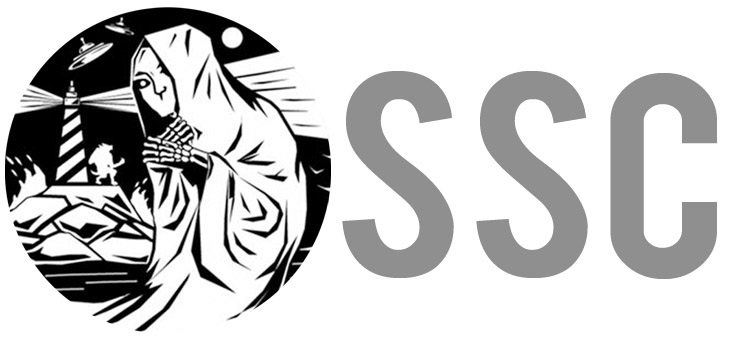
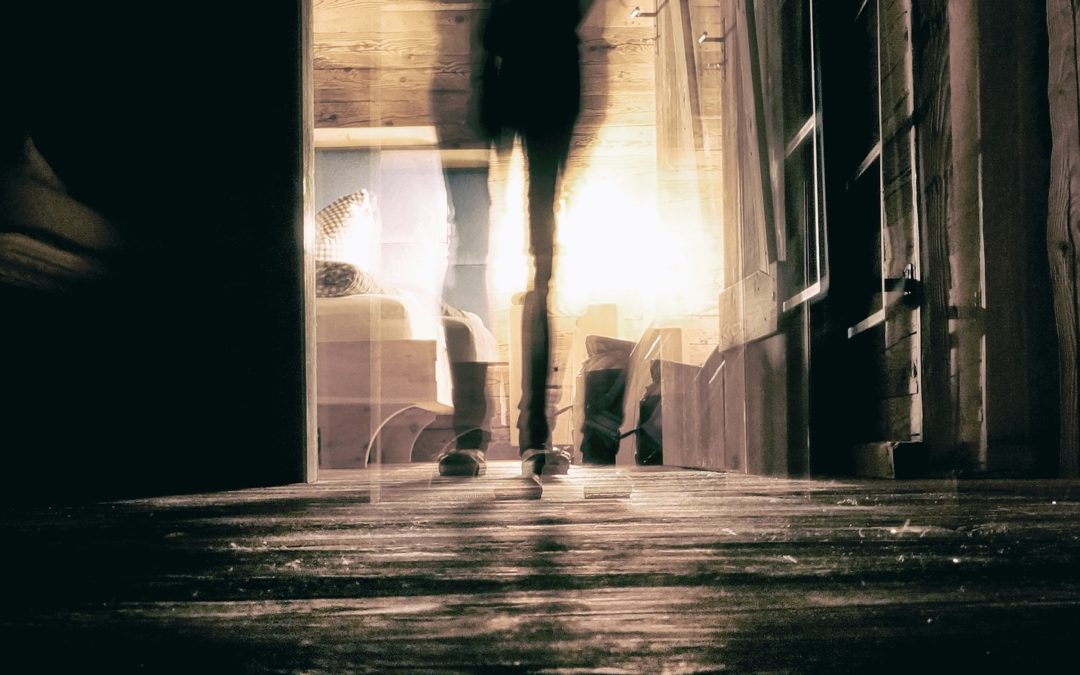
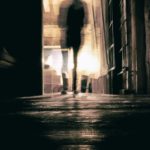


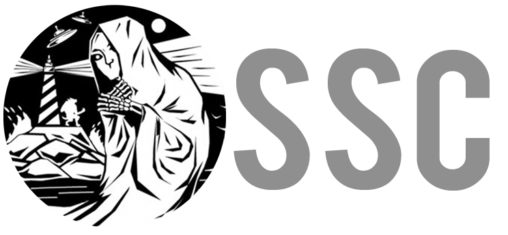
Why are ghosts always clothed? Do clothes live on after death? There’s never nude ghosts. If ghosts are not solid then how can they see? Light should pass through them rendering a ghost blind.